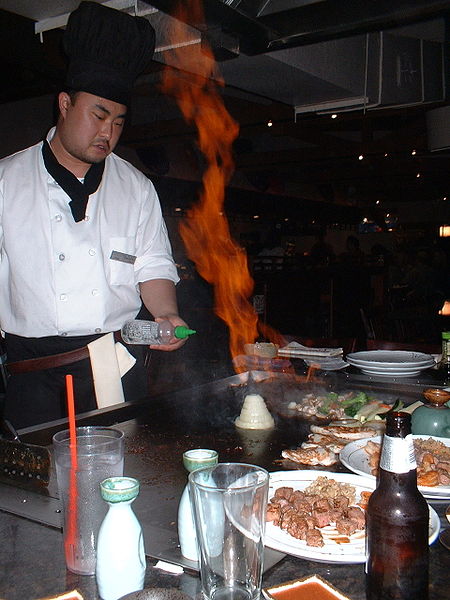Teppanyaki , often confused with hibachi , is a post-World War II style of Japanese cuisine that uses an iron griddle to cook food. The word teppanyaki is derived from teppan, the metal plate on which it is cooked, and yaki, which means grilled, broiled, or pan-fried. In Japan, teppanyaki refers to dishes cooked using a teppan, including steak, shrimp, okonomiyaki, yakisoba, and monjayaki.
Misono in Kobe—the first restaurant to offer teppanyaki
A teppanyaki chef cooking at a gas-powered teppan in a Japanese steakhouse
Chef preparing a flaming onion volcano
The hibachi is a traditional Japanese heating device. It is a brazier which is a round, cylindrical, or box-shaped, open-topped container, made from or lined with a heatproof material and designed to hold burning charcoal. It is believed hibachi date back to the Heian period. It is filled with incombustible ash, and charcoal sits in the center of the ash. To handle the charcoal, a pair of metal chopsticks called hibashi is used, in a way similar to Western fire irons or tongs. Hibachi were used for heating, not for cooking. It heats by radiation, and is too weak to warm a whole room. Sometimes, people placed a tetsubin over the hibachi to boil water for tea. Later, by the 1900s, some cooking was also done over the hibachi.
A porcelain hibachi
North American "Hibachi" cast iron grill
Primitive hibachi from before the Edo period (1600–1868) (Fukagawa Edo Museum)
A traditional charcoal hibachi, made c. 1880–1900







